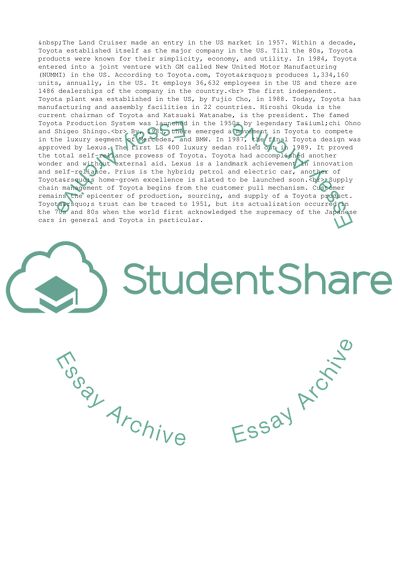Cite this document
(“Toyota Motor Corporation: History and Brief Overview Essay”, n.d.)
Toyota Motor Corporation: History and Brief Overview Essay. Retrieved from https://studentshare.org/business/1546080-case-study-description-and-analysis-of-toyota-company-involved-in-the-production-and-distribution-of-products-supply-chain-management
Toyota Motor Corporation: History and Brief Overview Essay. Retrieved from https://studentshare.org/business/1546080-case-study-description-and-analysis-of-toyota-company-involved-in-the-production-and-distribution-of-products-supply-chain-management
(Toyota Motor Corporation: History and Brief Overview Essay)
Toyota Motor Corporation: History and Brief Overview Essay. https://studentshare.org/business/1546080-case-study-description-and-analysis-of-toyota-company-involved-in-the-production-and-distribution-of-products-supply-chain-management.
Toyota Motor Corporation: History and Brief Overview Essay. https://studentshare.org/business/1546080-case-study-description-and-analysis-of-toyota-company-involved-in-the-production-and-distribution-of-products-supply-chain-management.
“Toyota Motor Corporation: History and Brief Overview Essay”, n.d. https://studentshare.org/business/1546080-case-study-description-and-analysis-of-toyota-company-involved-in-the-production-and-distribution-of-products-supply-chain-management.


